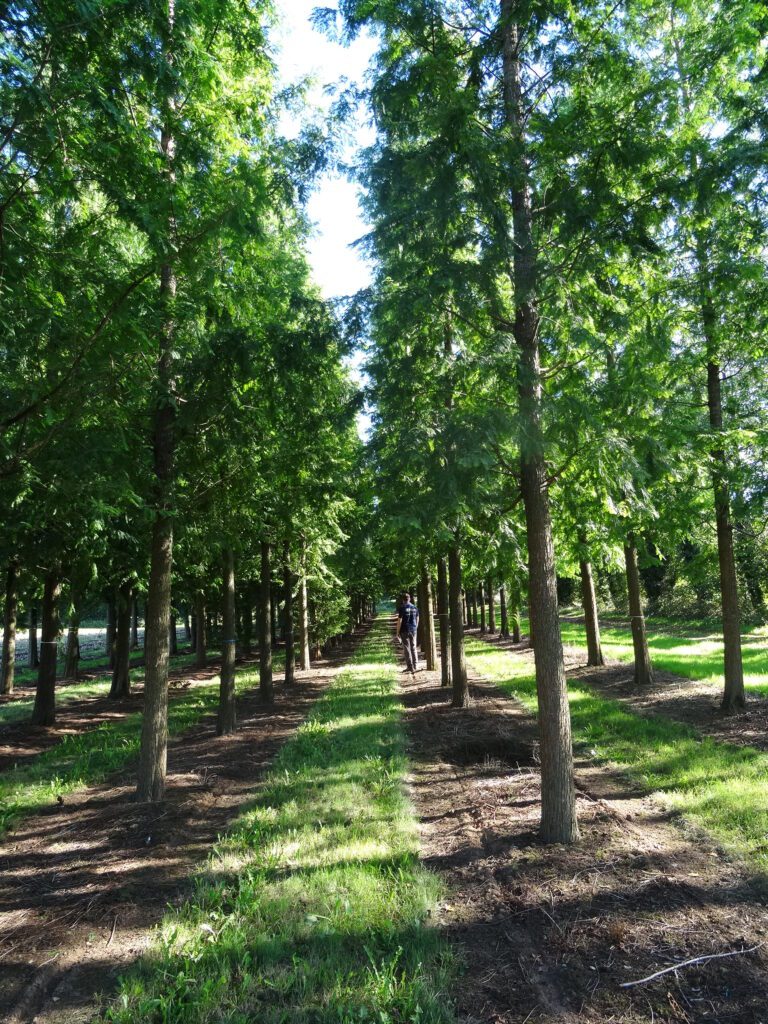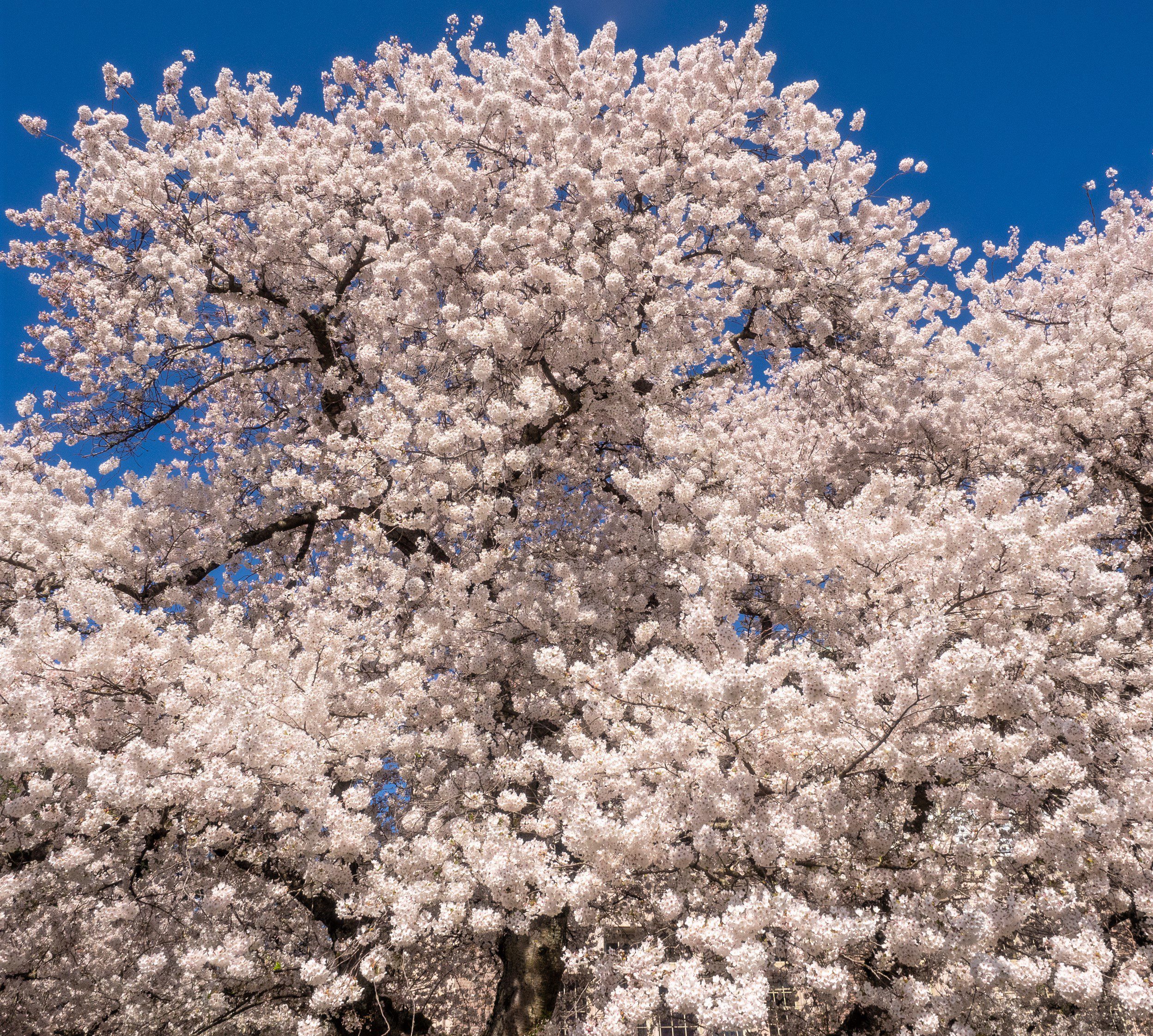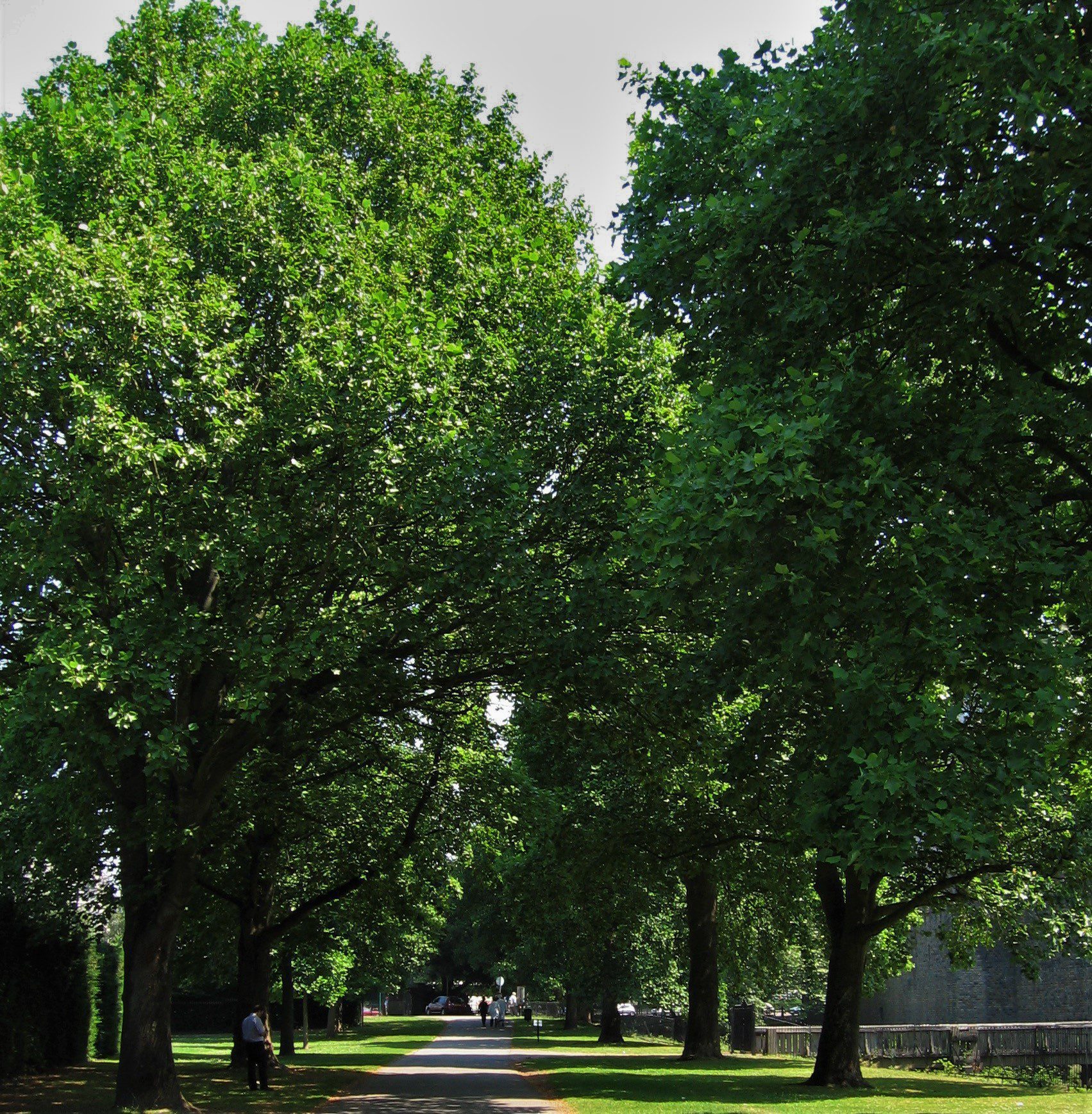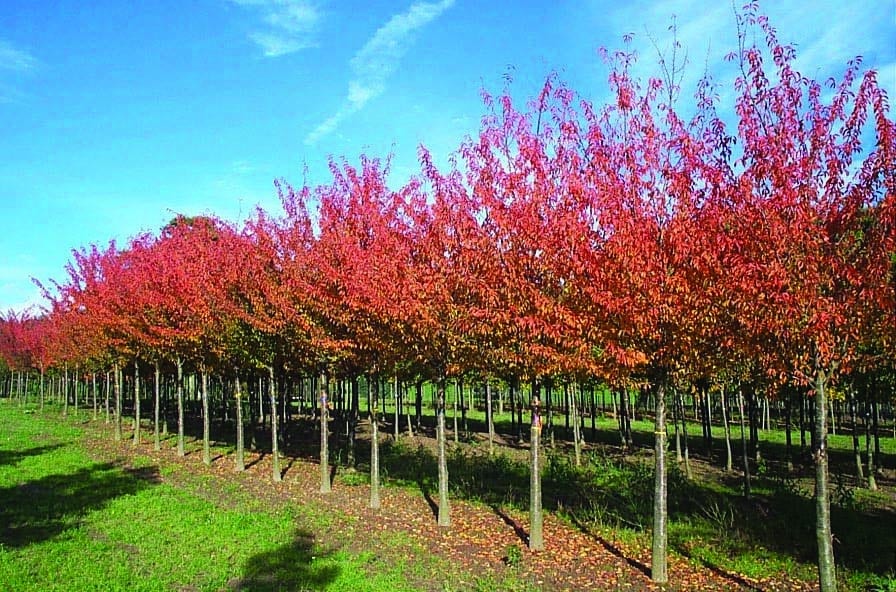With more frequent periods of extreme rainfall occurring, designers are looking for new solutions to manage surface water runoff in our urban locations. Between 2016 and 2019, flooding cost the UK economy around £504 million. In comparison, the estimated cost for 2024 alone is £708 million. This has put increased focus on some vital questions about rainwater management:
- Where will rainwater land and where will it collect?
- Where will it migrate to (i.e. what is its easiest pathway)?
- Where will the rainwater discharge?
For this reason, Sustainable Urban Drainage Systems (SUDS) are becoming of paramount importance within the design of our green infrastructure. SUDs utilise natural water systems such as trees, ponds and swales to minimise the risk of flash floods after sudden heavy rainfall. This approach gives designers the possibility of using the natural landscape and its benefits for water management, as opposed to hidden networks of pipes.
Trees intercept rainfall, holding it within their canopy and leaves. This allows it to slowly trickle down the branches and into the ground over a prolonged period of time. One single tree with a large canopy size, such as Tilia cordata, can hold over 4,500 litres of rainfall in an average year. A percentage of this rain will then evaporate directly from the leaves, significantly reducing the speed of storm water runoff.
Urban flooding often happens when tree canopy storage is exceeded. Densley planted green spaces can serve as effective water retention areas, allowing the soil to absorb excess water. Trees can help disperse this water back into the atmosphere through transpiration, improving soil permability. Swales are designed to aid stormwater mitigation. Trees in these areas are chosen for their ability to thrive in waterlogged conditions, absorb water, and tolerate dry periods and urban pollution.
A number of trees have been noted for their use with Sustainable Urban Drainage Systems. These include trees with large canopies to intercept and hold rainfall along with trees that thrive in locations prone to sudden flooding. These are ideal varieties to specify within areas designed to collect stormwater runoff.
Recommended Sustainable Urban Drainage Systems Trees
Liquidambar styraciflua
Alongside a canopy of large leaves, this tree has corky, crocodile-like bark that also helps hold rainwater. It enjoys wet locations and periods of waterlogging. For tight, condensed areas where storm water migrates, try mass planting of Liquidambar styraciflua ‘Slender Silhouette’.
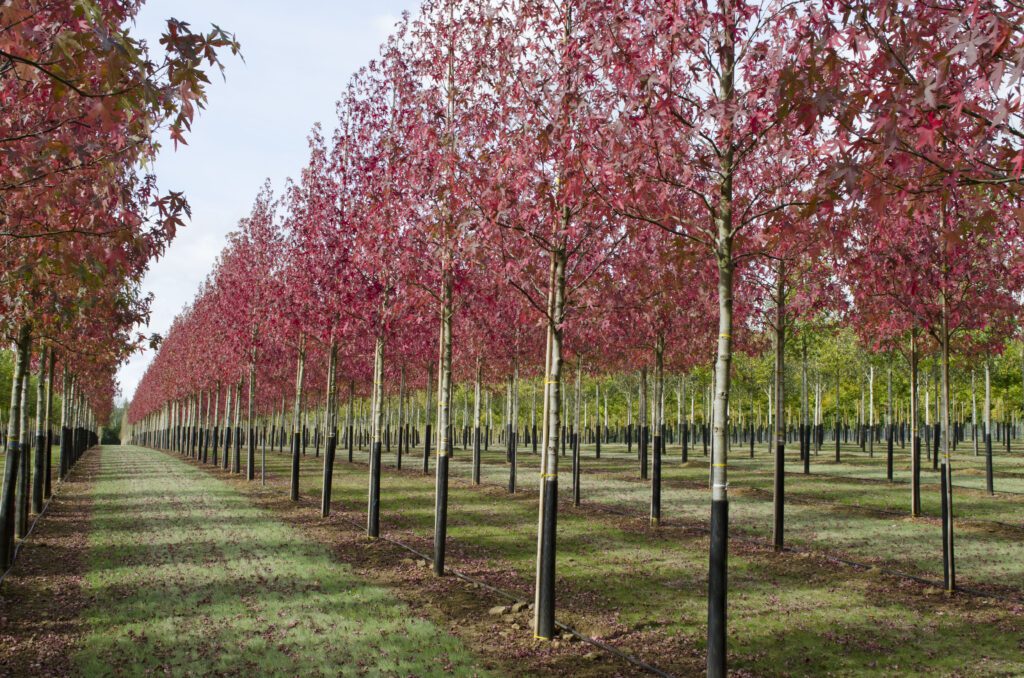
Pinus sylvestris
This large evergreen tree captures rainfall throughout its dense canopy all year round. Furthermore it has a tolerance for flash flooding and periods of dry weather.

Ulmus ‘New Horizon’
This is a full canopied tree that excels in both prolonged waterlogged and dry periods. It makes an excellent tree for inner city areas and will develop a full, dense canopy of lush leaves even within very poor locations.
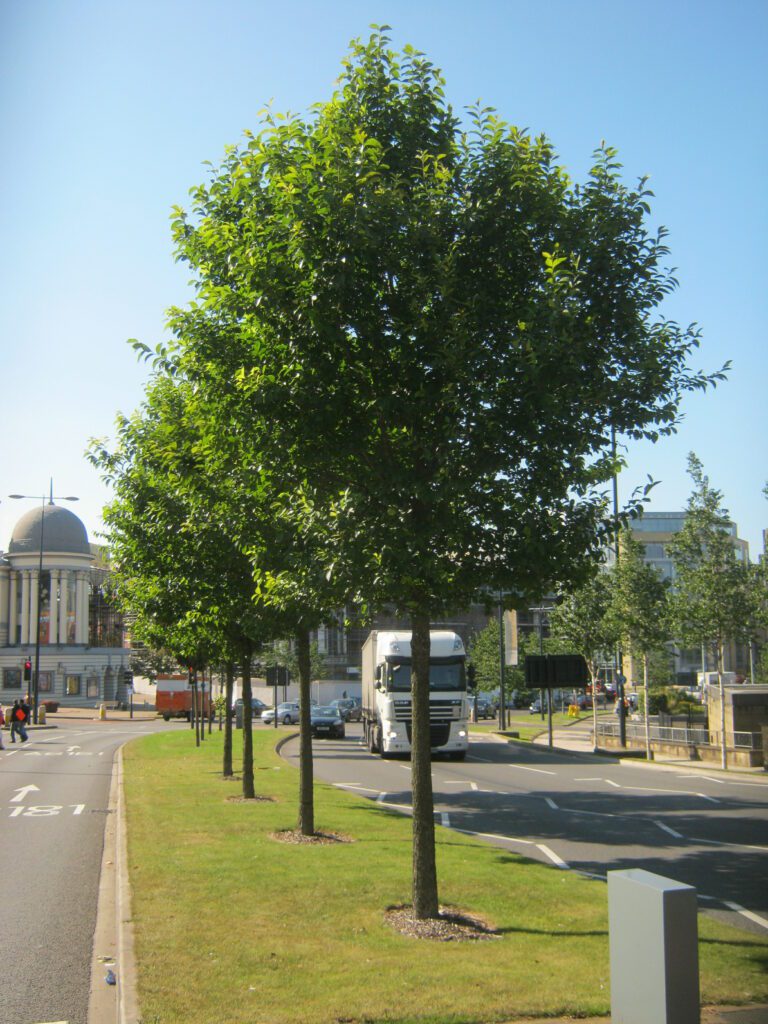
Hippophae salicifolia ‘Streetwise’
The sea buckthorn can thrive in even the most difficult of inner-city locations. Its leaves are willow-like, capturing rainfall nine months of the year whilst also tolerating salt and gritters.
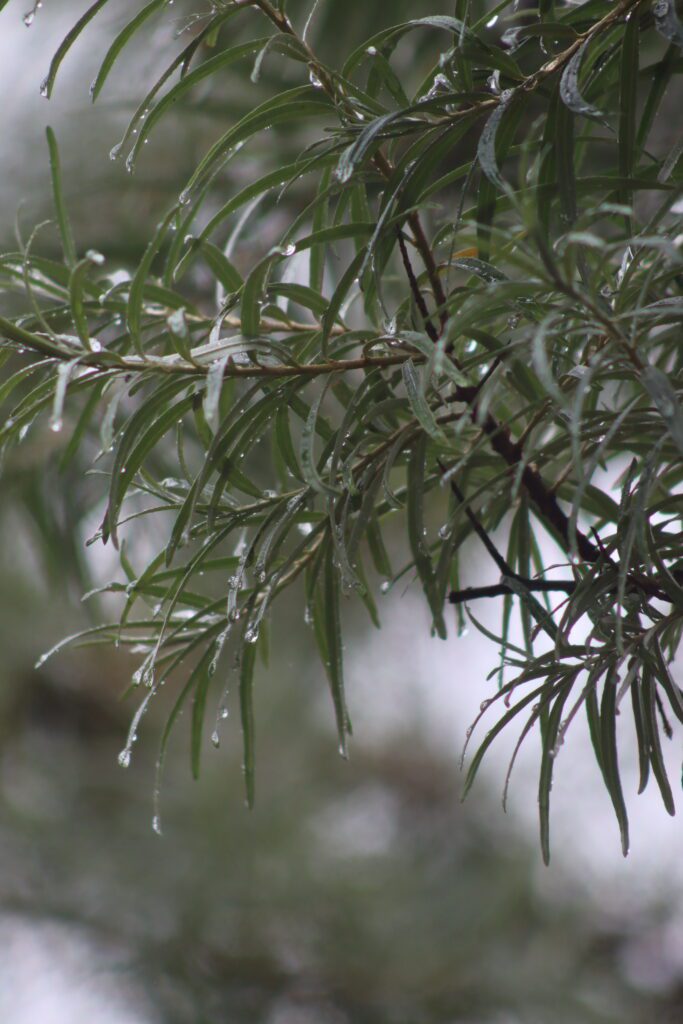
Platanus x hispanica
This large, spreading tree has leaves that can grow up to 15cm across. This feature makes it ideal for capturing rainfall, while its long limbs slow down the process of water entering the soil or urban locations.

Alnus cordata
The Italian Alder is highly resilient, thriving in periods of waterlogging and poor soil conditions. Unlike most alders, it tolerate dry sites exceptionally well and grows rapidly in challenging, exposed locations with strong winds.
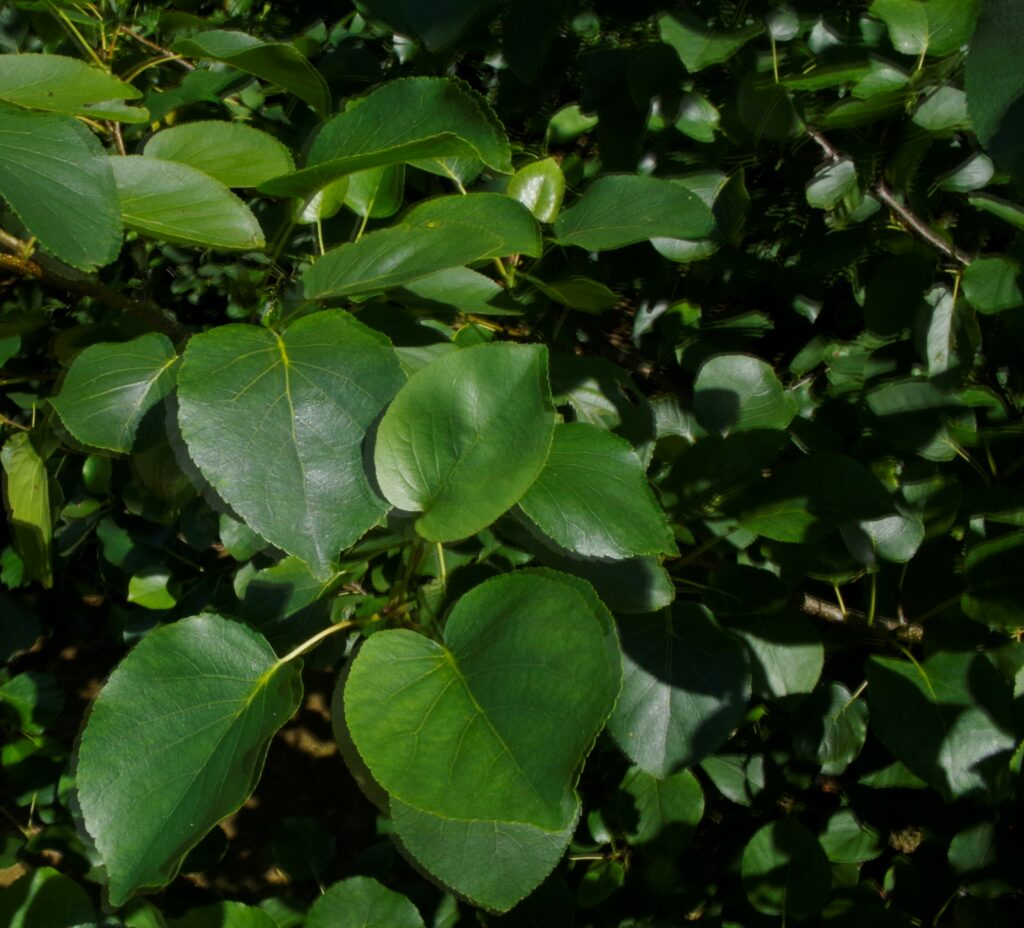
Quercus palustris
A robust oak with a large canopy that thrives in wet environments. Additionally, with its expansive form efficiently evaporating water, it alleviates soil saturation, making it perfect for capturing rainfall and transpiring stormwater runoff.
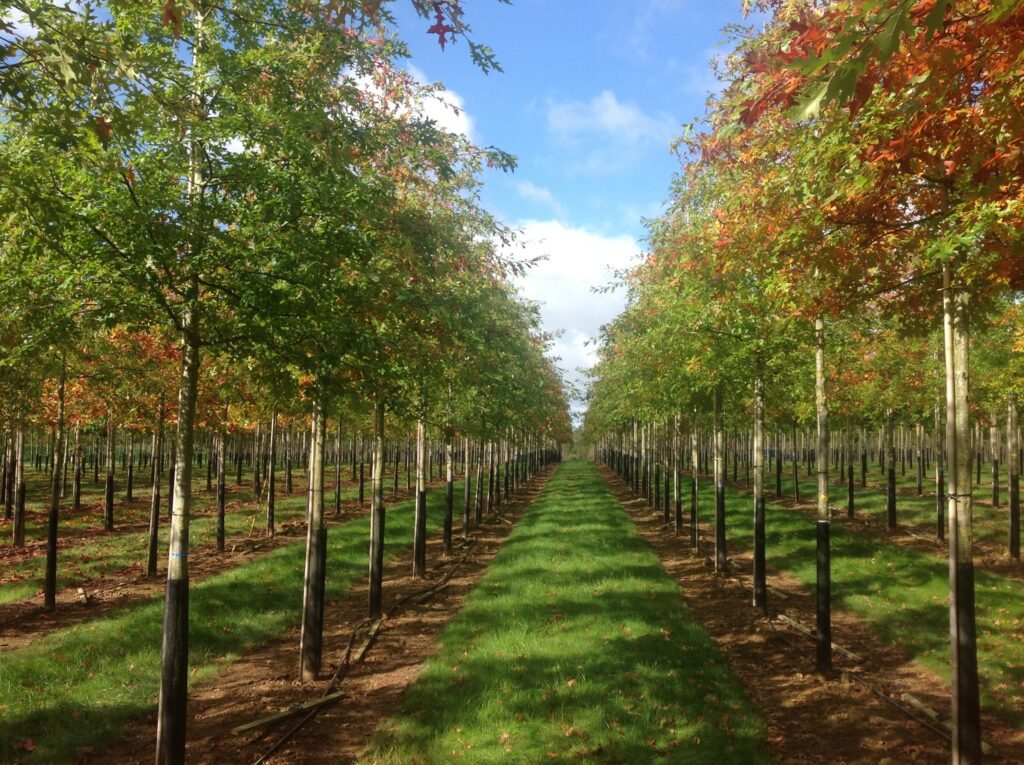
Betula nigra
This is a perfect tree for difficult locations that are prone to waterlogging. The bark offers all season interest, while also being well-suited for areas of urban stormwater runoff.
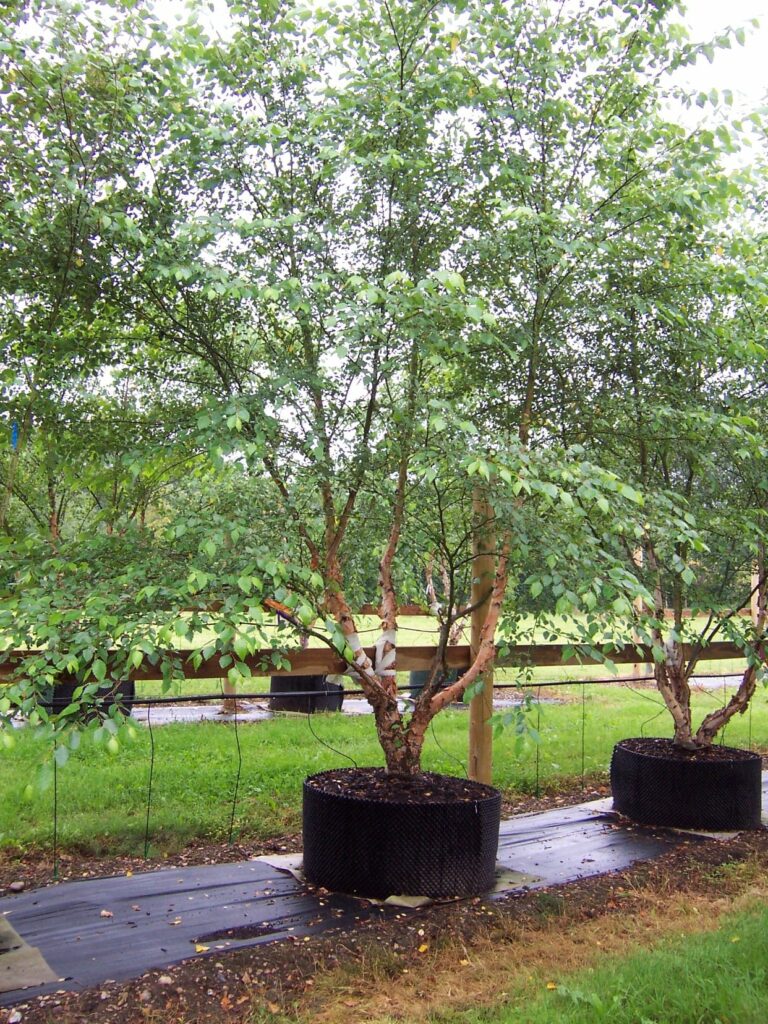
Metasequoia glytostroboides
This imposing pyramidal tree boasts a horizontal branch structure that captures and holds large quantities of rainfall. Moreover, it thrives in waterlogged conditions, effectively holding and dispersing rainwater.
